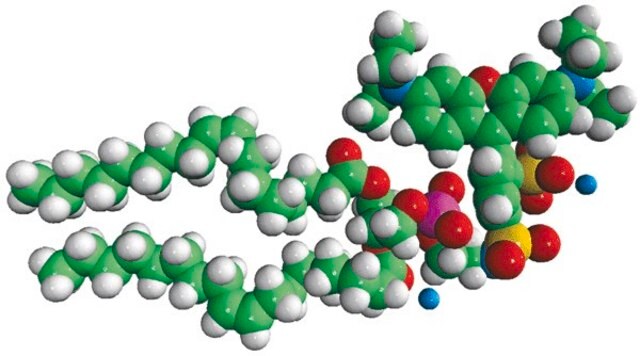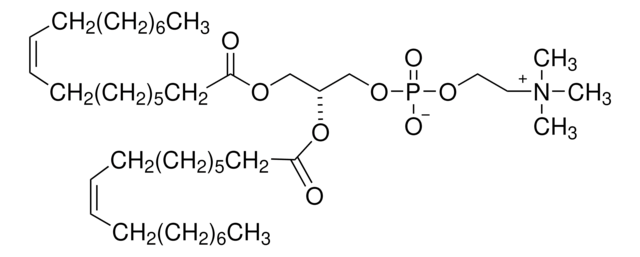850446P
Avanti
14:0-18:0 PC
1-myristoyl-2-stearoyl-sn-glycero-3-phosphocholine, powder
Synonym(s):
1-tetradecanoyl-2-octadecanoyl-sn-glycero-3-phosphocholine; MSPC; PC(14:0/18:0)
About This Item
Recommended Products
Assay
>99% (TLC)
form
powder
packaging
pkg of 1 × 200 mg (850446P-200mg)
pkg of 1 × 25 mg (850446P-25mg)
manufacturer/tradename
Avanti Research™ - A Croda Brand 850446P
lipid type
phospholipids
cardiolipins
shipped in
dry ice
storage temp.
−20°C
SMILES string
[O-]P(OCC[N+](C)(C)C)(OC[C@]([H])(OC(CCCCCCCCCCCCCCCCC)=O)COC(CCCCCCCCCCCCC)=O)=O
InChI
1S/C40H80NO8P/c1-6-8-10-12-14-16-18-19-20-21-23-25-27-29-31-33-40(43)49-38(37-48-50(44,45)47-35-34-41(3,4)5)36-46-39(42)32-30-28-26-24-22-17-15-13-11-9-7-2/h38H,6-37H2,1-5H3/t38-/m1/s1
InChI key
TYAQXZHDAGZOEO-KXQOOQHDSA-N
General description
Application
- in lipid bilayers to study its miscibility with d-erythro-N-palmitoyl-sphingomyelin (16:0-SM) using differential scanning calorimetry (DSC)
- as an asymmetrical lipid component in liposomes to study the impact of bilayer area and lipid geometry and as liposomal solubilizing agents
- to prepare a low temperature-sensitive liposome for thrombolytic studies
Biochem/physiol Actions
Packaging
Legal Information
also commonly purchased with this product
Storage Class Code
11 - Combustible Solids
Choose from one of the most recent versions:
Certificates of Analysis (COA)
Sorry, we don't have COAs for this product available online at this time.
If you need assistance, please contact Customer Support.
Already Own This Product?
Find documentation for the products that you have recently purchased in the Document Library.
Our team of scientists has experience in all areas of research including Life Science, Material Science, Chemical Synthesis, Chromatography, Analytical and many others.
Contact Technical Service








